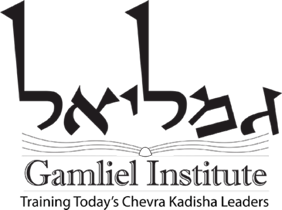Jewish Funeral Practices
The Jewish funeral and associated burial are traditions that form an important part of the foundation of the Jewish life cycle. For more on Jewish life cycle and death-related rituals and practices, see the Jewish End-of-Life Practices page.
A Jewish funeral is distinguished by its simplicity, humility, and solemnity. Its general format has not changed for thousands of years. It is usually held within 24 hours of passing, but no later than three days. The mitzvah of accompanying the dead to the final resting place is so great it supersedes all other mitzvot, including Torah study. However, before the funeral can take place, the body of the deceased must be prepared for burial in accordance with Jewish tradition. The body is considered holy so it is treated with utmost respect, hence embalming and cremation are not allowed.
It is a moral obligation for those caring for the deceased to ensure that the proper preparation is carried out. If one has contracted with a funeral home, one should make sure that the funeral director and the staff know that the family wants a traditional Jewish funeral, with all that it entails.
The Components of a Jewish Funeral (from Chabad.org):
- Taharah (Ritual washing of the body): Before the funeral, the body of the deceased is prepared for burial by the Chevrah Kadisha in accordance with Jewish law and tradition. This includes ritually washing and dressing the deceased while certain prayers are recited, and placing the body in a kosher casket. Men attend to men, and women to women.
- Kri’ah (Rending of one’s garments): During the funeral service, the mourners recite a blessing and rend their garments in expression of grief. This includes one who lost a father, mother, spouse, son, daughter, brother, and sister.
- Kavod (“Honor”; Paying Respects): Accompanying the casket to its final resting place. This includes gathering at the funeral home or chapel, or at the gravesite prior to the burial, in order to recite Psalms and to speak of the merits of the deceased.
- Hesped (Eulogy): This is an important element of kavod that is part of the funeral service.
- K’vurah (Burial): This includes the recitation of Mourners’ Kaddish and other prayers by the mourners.
- Nechamah (Condolence): Before leaving the gravesite, all present form a pathway comprised of two rows through which the mourners will walk as they leave the gravesite. As they pass, the congregation console the mourners.
Jewish Burial Practices
Levayah literally means “accompanying” and is the essence of the mitzvah of burial. Levayah is used as the overall term for both the funeral service and the burial, Often, the funeral service and the burial are separate. A related expression often used is l’vayat hameit, accompanying of the deceased. It the Jewish custom to bury our dead as soon as possible after death.
The funeral service (as distinguished from the burial) may be held at a separate location, such as a chapel, funeral home, synagogue, etc. or may be incorporated as part of the burial service. If kri’ah (tearing clothing or cutting a black ribbon worn on clothing as a symbol of mourning) has not been performed prior to the funeral/burial, now is the appropriate time to do so.
Today most Jews outside of Israel are buried in caskets. Note that general practice in talmudic times was for the body to be borne to the cemetery on a mitah (“bier”).
[Mitah is also used as the term for bed, as in the Sh’ma al Ha-mitah — the bedtime recitation of the Sh’ma prayer.]Maimonides ruled that bodies should be buried in a wooden casket. However, in the Middle Ages, there was no general rule as to whether burial should be in a casket. In Spain, the casket was not in vogue. Among French Jews, the casket was made from the table that had witnessed the hospitality and generosity of the deceased. This was also the custom in Eastern Europe where rabbis were buried in caskets made from the desks at which they had studied.
In the 16th century, the Kabbalistic notion prevailed that it was meritorious for the dead to be buried in direct contact with the earth in fulfillment of the biblical verse “for dust thou art and unto dust shalt thou return” (Gen. 3:19). Interment without a casket thus became the rule strictly adhered to by Orthodox Jews, and is the practice today in Israel, except for the bodies of soldiers.
The Kitzur Shulchan Aruch (chapter 199) states about interment:
The burial mentioned in the Torah connotes the placing of the body in the soil itself. In many places, however, the custom is to place the deceased in a coffin made of boards and to inter him thus. As it is unlikely that there should be no aperture at all in the coffin, this method of burial is valid. In some places, the corpse is buried without a coffin; it is laid on the ground without any board underneath, only one board is placed on each side, and one on the top to prevent any earth from falling upon the body, which would be a dishonor to him. In other communities, ordinary men are buried without a coffin, but kohanim and the firstborn males, who are of special importance, are placed in coffins. Care should be taken not to use the remnants of the boards out of which the coffin was made for any purpose other than to heat the water for the purification of the corpse. Benevolent people who in their lifetime fed the poor at their table should be interred in a coffin made out of the boards of that table…
What is a kosher casket? Kosher means “fit” or “proper,” but unlike the biblical delineation of which foods are kosher, there are no biblical rules to give guidance regarding manufacture of kosher caskets. The Talmud contains dozens of occurrences of Hebrew words that are translated to English as “casket”, “coffin”, “bier”, “chest” and more. But nowhere in Jewish writings is there a discussion of what makes a casket kosher.
Manufacturers of tachrichim (shrouds or burial garments) have suggested that there are “kosher” tachrichim dependent on the observance level of the workers and certifying that the product was not made on Shabbat. The rationale for this seems slim for tachrichim, and even slimmer for caskets. Basing Kashrut on a worker’s level of observance is a novel approach not practiced in kosher food manufacturing. More interesting and fruitful pursuits to define a kosher casket might include looking at working conditions, wages, and health benefits of the employees, as well as the environmental impact of the manufacturing ingredients and process.
The Talmud directs that all aspects of funeral and burial should be kept simple and inexpensive, and by extension fit and proper. The Babylonian Talmud (see Moed Katan 27a- 27b) contains an extended discussion of funeral practices and a story about Rabban Gamliel. This discussion can open a window to the meaning of ‘Kosher’ in relation to a casket.
“Formerly, they were wont to bring out the rich [for burial] on a dargesh [a tall state bed, ornamented and covered with rich coverlets] and the poor on a plain bier, and the poor felt shamed: they instituted therefore that all should be brought out on a plain bier, out of deference for the poor.”
Without knowing the difference between a dargesh and a bier in Rabban Gamliel’s time, the implication is clear – the dargesh is fancy and affordable to the rich; the bier is simple and used by those who are poor. The dargesh made it easy to carry the body and to show off wealth. The bier (Hebrew – mitah) is a simple stand or platform that holds and/or carries the body.
The above example from the Talmud goes back over 1,700 years. Its teaching is obvious: all Jews should be buried the same: in simple, unostentatious ways that honor the deceased and their families. Today’s inexpensive all-wood caskets (usually pine) have been almost universally adopted outside of Israel as the means to accomplish this.
The traditional burial service itself is very simple, composed of just a few elements:
- Carry the casket to graveside, stopping 7 times while reciting Psalm 91
- When reaching the grave, lower the casket while reciting Tziduk Hadin
- Invite others to place earth lovingly on casket
- Recite a Psalm (23, for example)
- (Optional) Recite Eil Malei Rachamim
- Say Kaddish
(Note: There is a special version of the Kaddish recited at burial, very similar to the daily Mourner’s Kaddish, and many communities use the more familiar version at burial.)
There are many variations to this, with additional Psalms and prayers included.
Filling in the grave is a mitzvah for each of us as an individual. The custom is to place the shovel back in the earth rather than passing it from hand to hand. The shovel may also be inverted to indicate that we are using it in an unusual way to show that we are not happy to see the person dead. Customs vary as to how many shovelfuls to place – some placing 1, others 3, and others not counting. Customs also vary as to the filling in of the grave, with some congregations simply placing a symbolic covering of earth; others cover the top of the casket, while still others fill in the grave completely (with all options in between).
At the conclusion of Kaddish, those gathered at the gravesite form two lines (shurot) through which the mourners pass on their way back to their cars. The symbolism is that the community shares their grief and offers support. Deborah Lipstadt movingly describes this final ritual:
One should not tarry at the cemetery for too long a period of time. The soul has been entrusted to its Maker, and all that lies in the earth is the shell that housed it during its sojourn on earth. To linger at such a time would, in most cases, accent the pain and the grief. One is loath, as I was, to hurry from the cemetery. It is unhealthy to remain too long and so hard to turn one’s back and leave. It is possible that the rabbis had this emotional dilemma in mind when they created the following custom. All those present, except the immediate family, form parallel lines a few feet apart and the mourners slowly pass through.
Some links to related topics are listed here:
- Burial vs. Cremation
- Burial of Non-Jews in a Jewish Cemetery
- Green Burial
- Jewish Cemeteries – Green and Greener
- Burial of Sacred Objects
- Burial in Israel

